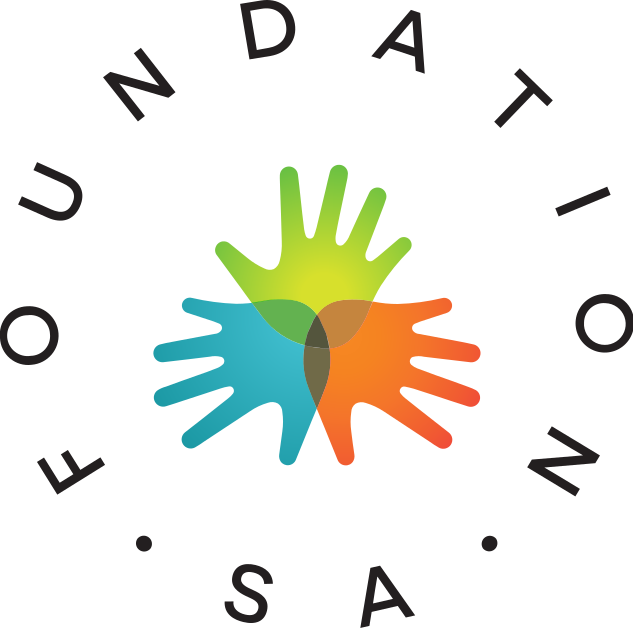Your security is important to us – this website and your personal data is securely encrypted. Please see our Privacy Statement
A Lifetime Passion for Conservation
Dr David Paton AM has been passionate about conservation since he was a youngster. As an eight year old boy, David would accompany his grandfather, Sir John Cleland on field-trips in the Adelaide Hills, collecting mushrooms and identifying rare birds.
“One day in our backyard in Beaumont I saw a bird I’d never seen before and after looking it up in my grandfather’s 12 Volume set of Matthews’ ‘The Birds of Australia’, I realised it was the first sighting of a Rose Robin in South Australia. From there a life-long passion for native birds began and today the Scarlet Robin features in the Bio·R logo,” Dr Paton shares.
Dr Paton has contributed to the understanding and management of Australia’s natural environment for over four decades and is highly regarded for his research activities in the Mount Lofty Ranges, Kangaroo Island and the Coorong, all internationally recognised South Australian icons
He founded Bio·R in 2007 and together with his daughter, Executive Officer, Dr Fiona Paton and a dedicated team of volunteers they work to reconstruct habitat to prevent species loss in South Australia.
“Bio·R’s ultimate long-term goal is to put back 150,000 hectares of restored, diverse habitat in South Australia to prevent wildlife extinctions,” says Dr Paton. To help support this long term vision, Bio·R established a Future Fund with Foundation SA in September 2022.
To learn more about this bold but critical vision, we spoke to Dr David Paton AM:
1. Why and how did Bio·R come to be established? What’s the story behind its creation and what kind of impact do you seek to make?
Bio·R was born from a need to drive the restoration of woodlands in heavily cleared landscapes of South Australia to stop the ongoing and imminent decline of native species. Governments and other not-for-profits were ineffective in their efforts to prevent this decline.
Hence the birth of Bio·R in 2007. Bio·R stands for Biodiversity, with the three Rs being Reconstruct, Research, and Reconnect.
We reconstruct complex habitat for biodiversity to prevent species loss; we use scientific research to continually improve our theoretical and practical knowledge; and we work to reconnect the community to natural systems and to develop intergenerational ownership.
Our work mainly focuses on the Mt Lofty Ranges region, with major projects at Frahns Farm near Murray Bridge and Cygnet Park on Kangaroo Island.
We aim to reverse the biodiversity crisis and species loss by restoring complex habitat on a large scale.
2. How does Bio·R differ from other environmental revegetation organisations?
Bio·R differs from other environmental organisations doing revegetation in six key ways:
Effective Conservation: Wildlife requires large continuous patches of suitable habitat to survive and thrive. Therefore, Bio·R invests in reconstructing diverse habitats over hundreds of hectares.
Evidence-based Works: Bio·R uses science to identify habitat requirements for wildlife and to deliver successful habitat reconstruction.
Reconnecting People with Nature: Bio·R provides the means for people to engage with wildlife – through volunteering, donating, or offsetting their Ecological Footprint, everyone can be part of a community that cares for nature.
Beyond Carbon: Everyone’s activities impact the environment. Bio·R does not just plant trees for carbon capture; we plant vegetation communities that offset Ecological Footprints, restore ecosystems and create habitat for wildlife.
Building a Sustainable Approach: We are a non-profit NGO with a large volunteer base. Money donated is used to fund habitat reconstruction projects, so all donations will have immediate, long-lasting benefits. This year, Bio·R chose to establish a Future Fund with Foundation SA. This investment will provide secure, long-lasting revenue to build and maintain habitats, uncoupling projects from the uncertainties of government funding.
Intergenerational Ownership: Recreating habitats with mature trees and functioning ecosystems takes many decades. This requires long-term commitment across several decades, something governments on an election cycle cannot provide.
3. How important is philanthropic support to the sustainability of Bio·R?
Bio·R’s work is largely funded by philanthropic donations from long term supporters, including foundations and individual donors. Whilst we do receive some funding from grants and government sources, our organisation’s strategic vision and sustainability model is to grow our relationships with donors so that we can have stable funding for scaling up our restoration projects.
The Mount Lofty Ranges area is one of 15 biodiversity hotspots in Australia, as important ecologically as the Great Barrier Reef. We aim to put back 150,000 hectares of restored, diverse habitat to prevent wildlife extinctions. This is Bio·R’s ultimate long-term goal, with shorter strategic goals of 100 hectares per annum by 2030 and 1,000 hectares per annum by 2050.
4. Why did you choose to establish a Future Fund with Foundation SA? What were the benefits that were most attractive to you and how do you intend to use your Fund?
“We are excited to be the first charity to establish a Future Fund with Foundation SA. Initially, we were attracted to the opportunity to invest our spare funds more effectively. These funds have traditionally been sitting in a bank account earning minimal interest. Foundation SA’s focus on ESG investments, coupled with their strong governance and experienced team, was a winning combination for our decision to invest,” says Dr Paton.
Since becoming part of the Foundation SA family, we have also relished the opportunity to network with other sub-fund members, providing a chance to learn from and connect with other foundations and charities. We plan to use our fund as a secure investment holding, from which we can draw funds at key moments in the year for major projects, such as the annual planting festival and the new herbivore exclusion fence. It is reassuring for the sustainability of our organisation that we have our funds responsively and ethically invested so that we can maximise our funds and our organisational impact.
5. What opportunities are available for individuals or philanthropic funders to get behind the work of Bio·R?
There are many ways for individuals or philanthropic funders to support Bio·R’s work in restoring habitat.
Supporters can contribute to our current fundraising project, the new herbivore exclusion fence. We are hoping to raise $210,000 to build a 7km fence around 200 ha of predominantly cleared land on the Eastern half of Frahns Farm to enable restoration works to begin. One metre of fence costs $30 and protects about 285m2, which is slightly bigger than a tennis court. We have already raised over $74,000 so far this year and aim to raise a total of $105,000 over the Christmas period.
Alternatively, supporters may wish to contribute more generally to our Bio·R Conservation Fund to support a wide range of our activities, including wildlife monitoring, management of our seed orchard, and purchasing of seeds and tubestock.
We are particularly looking for a long-term partner to support the part-time employment of an ecologist for a 3-year period, at approximately $50,000 per year. Bio·R has no employees and is entirely volunteer run but, if we are to grow and fulfil our ambitious goal of increasing the area of restored habitat over the next 20 years, some paid staff will be essential. We are also committed to providing experience and opportunities for young ecologists in South Australia to be involved in projects that hone their theoretical as well as their practical skills.
For those wanting to donate time rather than money, Bio·R has many opportunities for volunteering throughout the year. Our largest volunteering event is the Bio·R annual planting festival, which takes place at Frahns Farm every June. In 2022, more than 600 volunteers joined us over six community planting days and three corporate planting days to plant over 40,000 tubestock. Other volunteering opportunities range from fauna monitoring activities such as bird banding, nest box checking and pitfall trapping, through management of invasive species by group weeding days, to vegetation monitoring.
6. What are you most hopeful about in terms of the future of SA’s native wildlife habitats?
Bio·R remains hopeful and determined, despite the significant environmental challenges facing us this century – and they are significant. Here in Australia, we are facing a biodiversity crisis; we have one of the worst rates of species extinction globally for both flora and fauna species.
In the Mt Lofty Ranges region, there is only 10% of remnant vegetation left, which is not enough habitat for our native animals to survive. The vegetation has been disproportionately cleared from the good quality agricultural land on lower elevations, where in some areas only 2% remains.
“Even if we do nothing and clear no further vegetation, with only 10% remnant vegetation, half of our bird species will become extinct in the Mt Lofty region by the end of this century. Based on ecological theory, the magic number we need, is 30% – if we restore coverage of native vegetation across the Mt Lofty region to 30%, we will provide enough habitat to avoid any further species loss,” says Dr Paton.
Hence the need for 150,000ha of additional habitat in the next 80 years. This is an ambitious but entirely achievable goal.
Currently, Bio·R is restoring about 10ha of cleared land per year with a diverse mix of plant species. In 10 years, we aim to be doing 100ha per year and in 25 years, at least 1000ha per year. If we reach these targets and continue growing our activities, then we will deliver the 150,000ha of restored habitat that are needed by the end of this century.
“So yes, Bio·R remains hopeful. And everyone is invited to be a part of this very tangible and achievable goal of preventing species loss in our own backyard by restoring biodiverse habitat. Join us as a volunteer or a donor, and together we can continue Bio·R’s important work to rewind the biodiversity loss and save our environment for future generations”, says Dr Paton.
If you’d like to support the work of BioR you can donate directly to their fund here.

Contact us
- www.foundationsa.org.au

- hello@foundationsa.org.au

- +61 8 8223 3597


Australian Communities Foundation (ACF) is Foundation SA’s implementation partner and Trustee of funds under management.
Main Fund (tax deductible) ABN 57 967 620 066
Extension Fund (non-tax deductible) ABN 57 485 460 977
Scholarship Fund (tax deductible) ABN 82 218 603 765.

We pay our respects to the Traditional Custodians of the Adelaide region on which our office stands, the Kaurna people. We acknowledge all First Nations peoples and their deep connection to the land. The dispossession and treatment that has occurred, still impacts on the lives of Aboriginal and Torres Strait Islander people today. We walk hand-in-hand with all First Nations peoples on the path to reconciliation.

